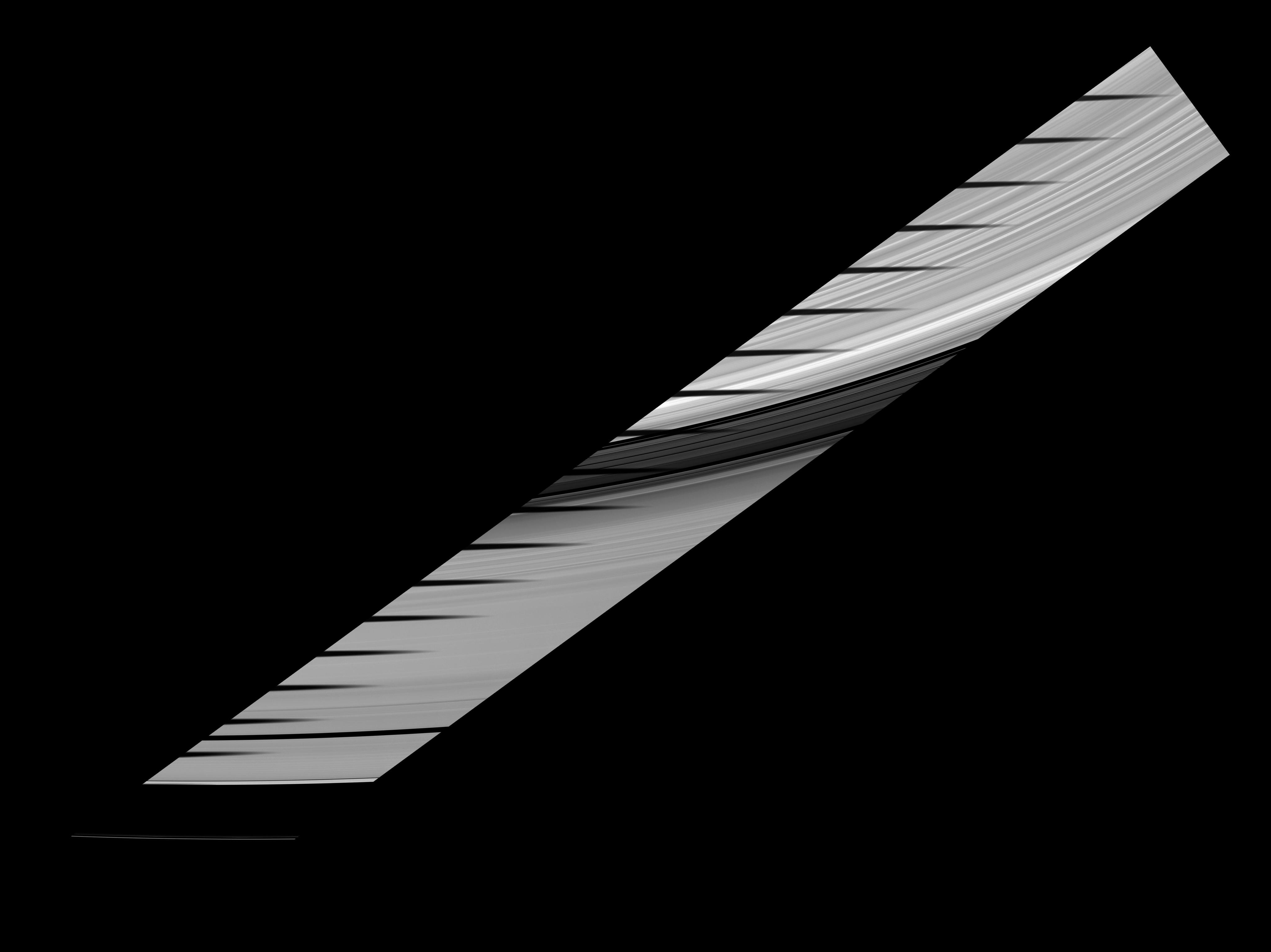A Shadow’s Traverse

| PIA Number | PIA11658 |
|---|---|
| Language |
|
Mimas' shadow traverses the sunlit side of Saturn's rings in this movie and mosaic showcasing the unusual sights seen at Saturn as the planet approaches its August 2009 equinox.
The novel illumination geometry created as the Saturnian system approaches equinox allows moons orbiting in or near the plane of Saturn's equatorial rings to cast shadows onto the rings. These scenes are possible only during the few months before and after Saturn's equinox which occurs only once in about 15 Earth years.
Twenty images, each taken 3 minutes and 36 seconds apart, were combined to create this mosaic and movie. Contiguous images were stitched together to create the mosaic showing the whole swath of the rings across which the moon's shadow passed.
At the beginning of the movie, the shadow starts on the bright B ring. It crosses the darker Cassini Division and then moves to the A ring. At the end of the movie, the edge of the shadow just catches the edge of the A ring next to blackness of the Roche Division separating the A ring from the thin F ring.
These images have been processed, and background stars have been removed. To see a movie and mosaic of Mimas' shadow moving across the unlit side of the rings, see PIA11660.
This view looks toward the sunlit side of the rings from about 32 degrees below the ringplane. The images were taken in visible light with the Cassini spacecraft narrow-angle camera on April 9, 2009. The view was obtained at a distance of approximately 1.1 million kilometers (684,000 miles) from Saturn and at a Sun-Saturn-spacecraft, or phase, angle of 55 degrees. Image scale is 6 kilometers (4 miles) per pixel.
The Cassini-Huygens mission is a cooperative project of NASA, the European Space Agency and the Italian Space Agency. The Jet Propulsion Laboratory, a division of the California Institute of Technology in Pasadena, manages the mission for NASA's Science Mission Directorate, Washington, D.C. The Cassini orbiter and its two onboard cameras were designed, developed and assembled at JPL. The imaging operations center is based at the Space Science Institute in Boulder, Colo.
For more information about the Cassini-Huygens mission visit http://saturn.jpl.nasa.gov . The Cassini imaging team homepage is at http://ciclops.org .
Credit: NASA/JPL/Space Science Institute
